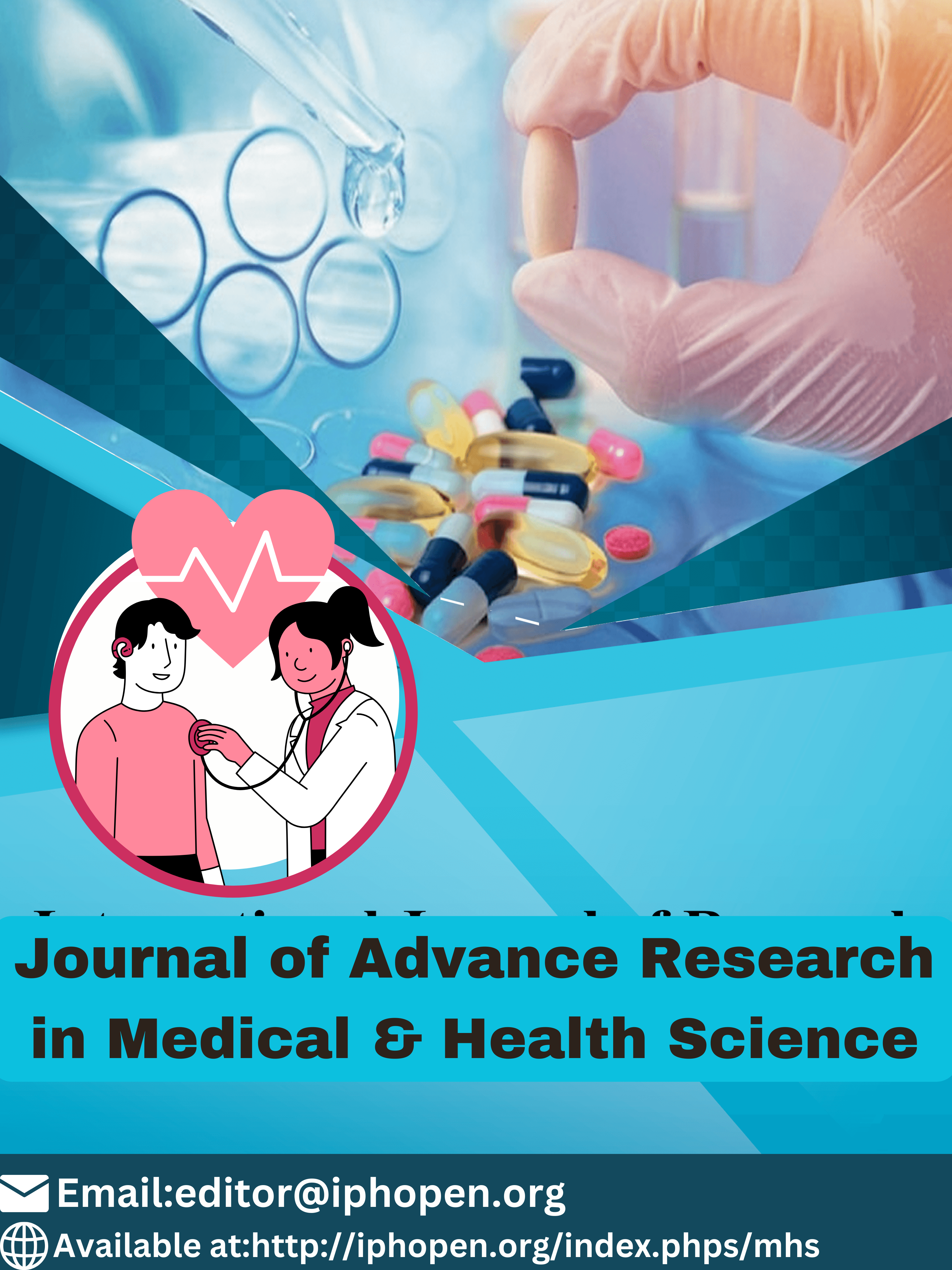Evolution of trends in measles data from the Ansongo health district, Mali, 2016-2021
DOI:
https://doi.org/10.5281/zenodo.11399675Keywords:
Evolution, tendance, data, measles, Ansongo, MaliAbstract
Measles is a febrile rash illness caused by a morbillivirus of the Paramyxoviridae family and remains an important public health problem in many countries despite the existence of a safe and effective vaccine. Measles surveillance is one of the key aspects of combating this disease. To our knowledge, no analysis of measles surveillance data has been carried out in Ansongo so, in order to help form a basis for decision-making in a precarious security context, we initiated this study whose objective is to analyze measles surveillance data from the Ansongo health district from 2016 to 2021. Methodology: We conducted a cross-sectional study with descriptive purposes of measles surveillance data in the Ansongo health district during the period of study. The data were extracted using a form designed in Excel and then analyzed in SPSS version 25.0 software. They were analyzed in time, place and people. Frequencies, proportions and ratios were calculated. Results: In total, there were 77 reported cases of measles with zero deaths. There were 33 biologically confirmed cases, 3 by epidemiological link and 28 clinically compatible. Those under five were the most represented with 45.50% with a sex ratio of 1.2 male/female. The peaks were in 2016, 2018, 2019 and 2020 with 21, 16, 16 and 19 cases respectively and no cases were reported in 2017. Most cases appeared between January and March. The Talataye health area reported the most cases with 27.27% (N=21) while 16 out of 23 health areas reported no cases for 6 years. Vaccination coverage in the district fluctuated between 92.24% and 110.61% (sometimes above and sometimes below 95%). Conclusion: Measles evolves cyclically in Ansongo in a context marked by insecurity with vaccination coverage sometimes low and sometimes high and a lack of notification in 2017. The majority of cases are young male children not vaccinated against measles. measles or unknown vaccination status. More than two thirds of health areas remained silent. This situation would require training of health personnel, improvement of feedback of laboratory results and a revitalization of community-based surveillance.
References
Ministère de la santé et du developpement social du Mali. Guide Technique pour la Surveillance Intégrée de la Maladie et la Riposte au Mali [Internet]. 2021 [cité 22 nov 2022]. Disponiblesur:https://files.aho.afro.who.int/afahobckpcontainer/production/files/Guide_SIMR_Mali_13_JAN_2022.pdf
Biru M, Geleta T, Assefa E, Alayu M, Tayachew A, Wossen M. Analysis of measles case-based surveillance data in Afar Regional State, Ethiopia, from 2013 to 2017. AJHST. 30 sept 2022;4(1):1?8.
Wariri O, Nkereuwem E, Erondu NA, Edem B, Nkereuwem OO, IdokoOT, et al. A scorecard of progress towards measles elimination in 15 west African countries, 2001–19: a retrospective, multicountry analysis of national immunisation coverage and surveillance data.Lancet Glob Health. 16 févr 2021;9(3):e280?90.
Sy EIA, Barry D, Traoré B, Boly A, Koné B, Dembélé A, et al. Profil épidémiologique de la rougeole au Mali de 2009 à 2018.Journal of Interventional Epidemiology and Public Health. 2021;4(8).
Coughlin MM, Beck AS, Bankamp B, Rota PA. Perspective on Global Measles Epidemiology and Control and the Role of Novel Vaccination Strategies. Viruses. 19 janv 2017;9(1):11.
Ibrahim BS, Usman R, Mohammed Y, Datti Z, Okunromade O, Abubakar AA, et al. Burden of measles in Nigeria: a five-year review of casebased surveillance data, 2012-2016. Pan Afr Med J. 22 janv 2019;32(Suppl 1):5.
Togola OB, Ballayira Y, Sangho O, Traoré B, Kayembé K, Diakité S, et al.Analyse des données de surveillance de la rougeole, Tominian, 2009 à 2018. Mali Santé Publique. 31 déc 2019;63?8.
.Ministère de la Santé et du Développement Social, Cellule de planification et de statistique secteurdéveloppement social et promotion de la famille. Annuaire du système national d’information sanitaire etsocial du Mali 2020 [Internet]. 2021 [cité 22 nov 2022 à05:46:40]. Disponible sur:http://mail.cnom.sante.gov.ml/sante2014/docs/Annuaire%20SNISS%202020.pdf
.Ministère de la Santé et de l’Hygiène Publique. Annuaire du système local d’information sanitaire du Mali
2021.
Direction régionale de la santé de Gao. Annuaire du Système Local d’Information Sanitaire 2020 de la régionde Gao. 2021.
Nsubuga F, Ampaire I, Kasasa S, Luzze H, Kisakye A. Positive predictive value and effectiveness of measlescase-based surveillance in Uganda, 2012-2015.PLoS One. 8 sept 2017;12(9):e0184549.
Organisation mondiale de la Santé. Introduction de principes de surveillance des maladies évitables par lavaccination [Internet]. 2018 [cité 13 déc 2022 à 07:27:42]. Disponible sur: https://cdn.who.int/media/docs/default-source/immunization/vpd_surveillance/vpd-surveillance-standards-publication/who-surveillancevaccinepreventable-01-overview-french-r1.pdf?sfvrsn=932d9e08_8&download=true
Organisation mondiale de la Santé. Normes recommandées par l’OMSpour la Surveillance. 2000;(2).Disponible sur: https://data.unaids.org/publications/irc-pub04/surveillancestandards_fr.pdf
Bonita R, Kjellström T, Beaglehole R, Organisation mondiale de la santé.Éléments d’épidémiologie.pdf.2010.
Hassen MN, Woyessa AB, Getahun M, Beyene B, Buluanger L, Ademe A, et al. Epidemiology of measles inthe metropolitan setting, Addis Ababa, Ethiopia, 2005–2014: a retrospective descriptive surveillance dataanalysis.BMC Infect Dis. 14 août 2018;18:400.
Coulibaly H, Sangho O, Sogodogo S, Keyembé K, Dakouo H. Evaluation de la surveillance épidémiologiquede la rougeole?: Analyse de la base de données du district sanitaire de Koulikoro de 2012-2018. Mali SantéPublique. 30 juin 2019;66?9.
Andrianou XD,Del Manso M, Bella A, Vescio MF, Baggieri M, Rota MC, et al. Spatiotemporal distributionand determinants of measles incidence during a large outbreak, Italy, September 2016 to July 2018.EuroSurveill. 25 avr 2019;24(17):1800679.
Downloads
Published
How to Cite
Issue
Section
License
Copyright (c) 2024 IPHO-Journal of Advance Research in Medical & Health Science

This work is licensed under a Creative Commons Attribution-NonCommercial-ShareAlike 4.0 International License.
Author(s) and co-author(s) jointly and severally represent and warrant that the Article is original with the author(s) and does not infringe any copyright or violate any other right of any third parties and that the Article has not been published elsewhere. Author(s) agree to the terms that the IPHO Journal will have the full right to remove the published article on any misconduct found in the published article.






















